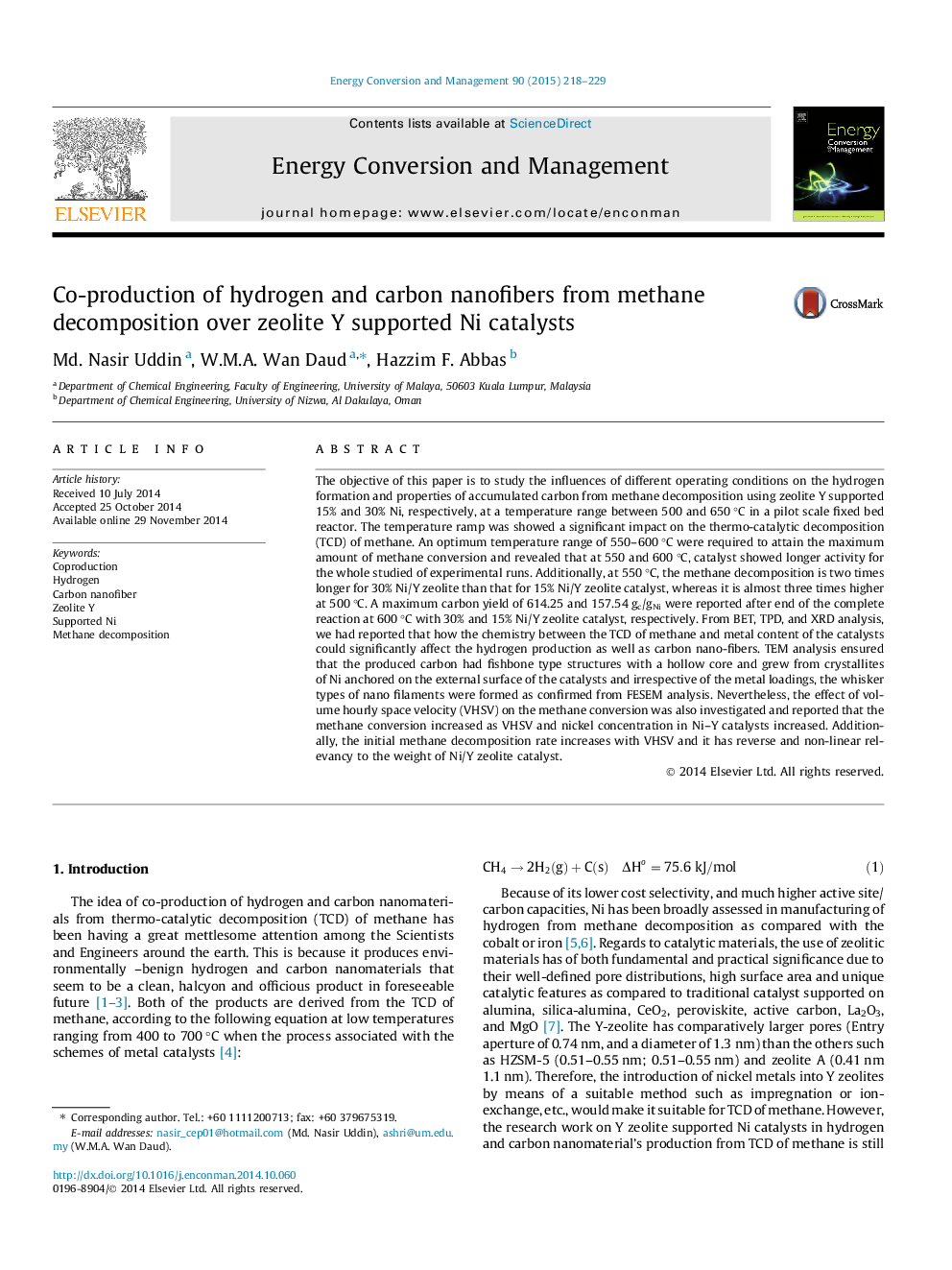| Article ID | Journal | Published Year | Pages | File Type |
|---|---|---|---|---|
| 771820 | Energy Conversion and Management | 2015 | 12 Pages |
•Methane cracking requires an optimum temperature range of 550–600 °C for H2 yield.•At 550 and 600 °C, catalyst showed longer activity for the whole test.•At 600 °C, a 614.25 gc/gNi of carbon was obtained using 30% Ni/Y zeolite catalysts.•Produced filamentous carbon has the same diameter as the metallic nickel itself.•VHSV has reverse and non-linear relevancy to the weight of Ni/Y zeolite catalyst.
The objective of this paper is to study the influences of different operating conditions on the hydrogen formation and properties of accumulated carbon from methane decomposition using zeolite Y supported 15% and 30% Ni, respectively, at a temperature range between 500 and 650 °C in a pilot scale fixed bed reactor. The temperature ramp was showed a significant impact on the thermo-catalytic decomposition (TCD) of methane. An optimum temperature range of 550–600 °C were required to attain the maximum amount of methane conversion and revealed that at 550 and 600 °C, catalyst showed longer activity for the whole studied of experimental runs. Additionally, at 550 °C, the methane decomposition is two times longer for 30% Ni/Y zeolite than that for 15% Ni/Y zeolite catalyst, whereas it is almost three times higher at 500 °C. A maximum carbon yield of 614.25 and 157.54 gc/gNi were reported after end of the complete reaction at 600 °C with 30% and 15% Ni/Y zeolite catalyst, respectively. From BET, TPD, and XRD analysis, we had reported that how the chemistry between the TCD of methane and metal content of the catalysts could significantly affect the hydrogen production as well as carbon nano-fibers. TEM analysis ensured that the produced carbon had fishbone type structures with a hollow core and grew from crystallites of Ni anchored on the external surface of the catalysts and irrespective of the metal loadings, the whisker types of nano filaments were formed as confirmed from FESEM analysis. Nevertheless, the effect of volume hourly space velocity (VHSV) on the methane conversion was also investigated and reported that the methane conversion increased as VHSV and nickel concentration in Ni–Y catalysts increased. Additionally, the initial methane decomposition rate increases with VHSV and it has reverse and non-linear relevancy to the weight of Ni/Y zeolite catalyst.
